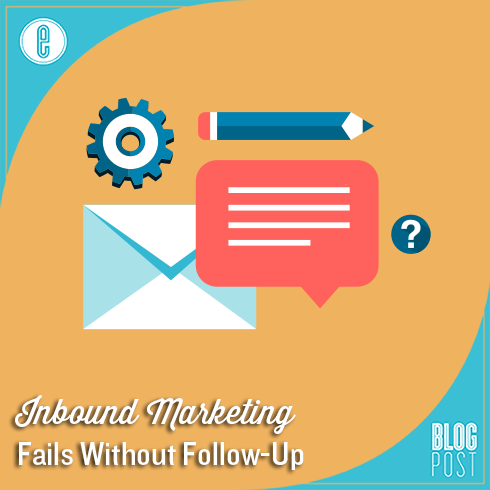Most inbound marketing focuses on generating leads. Turning a visitor into a lead by offering (and promoting) relevant and interesting content is a difficult process that should be the focus of your social media, SEO, and blogging efforts. But what happens to the lead once it enters your database? If you don’t follow up and take strategic efforts to turn your lead into a customer, all the work you put into generating that lead is wasted.
The Initial Follow-Up
Following up should begin with an email sent almost immediately following your new lead filling out a landing page or signing up for a newsletter. If you wait hours or even days, your leads may have forgotten they even signed up, going elsewhere for their content needs. Studies have shown that leads who received a follow-up within five minutes of signing up were ten times more likely to react positively than those who had to wait. Of course, just following up isn’t enough – it’s also important to give them exactly what you promised in return for their information. Even if you already provided a link to the content on a dedicated thank you page, link to it again in the follow-up email to ensure they receive and read your content. At the very least, thank them for signing up, suggest next steps like following you on social media or downloading other, relevant content, and let them know what to expect from you in the future.
Nurturing Leads
What the future holds for your leads depends on your lead nurturing strategy. Always remember that 95 percent of your leads aren’t yet ready to buy from you – but that doesn’t mean they won’t in the future. The best nurturing strategies subtly establish your company as a thought leader in the minds of your leads, who will then remember you more easily once the time comes for them to make a buying decision. Just how you nurture your leads depends on your resources and industry. Generally, marketers consider regular emails with new content related to your company and your industry to be most effective. Follow-up phone calls are still common, especially in B2B situations. If you’ve convinced your leads to follow you on social media, it’s a great tool to continue sharing content and establishing a relationship.
Social Listening
Speaking of social media, you may also want to think about incorporating social listening into your lead nurturing efforts. Most companies use listening techniques to unearth customer service issues or spread brand awareness, but the same techniques also work when looking to communicate with leads. Inbound marketing software, like HubSpot, marks leads in its social media monitoring tool, allowing marketers to discern easily between users who have and haven’t yet become part of your database. But social listening can be effective for lead nurturing even without such an elaborate tool, as the type of message often suggests whether a user is familiar with your company or not. If they are, try interacting with them and gently nudging them toward your new and relevant content.
Closing the Deal
After enough nurturing, your leads will become ready to make a buying decision. Now is the time to help them choose you over your competitors with offers like free trials or coupons. The biggest inbound marketing providers like HubSpot offer lead scoring that lets companies estimate when that time may be. But even those are just estimates; some leads may be ready to become customers just days after signing up, while others could take months until the need for your product or service arises. So how do you know when to nudge them to that final step? The best way to find out is to make your offers intermittently in your nurturing process. Instead of sending two month’s worth of weekly emails with relevant content to your leads, try mixing in a free trial or coupon to gauge the response. If that response is overwhelmingly positive, you leads may not need the amount of nurturing you thought they did. As with any marketing effort, testing different variations is the best way to predict success. Even before you arrive at the best time to close the deal with your leads, the fact that you followed up strategically means your chances at turning leads into customers increase dramatically. That’s how truly important following up is in inbound marketing.
-FINAL(01-00)-White&Blue-01.svg)





